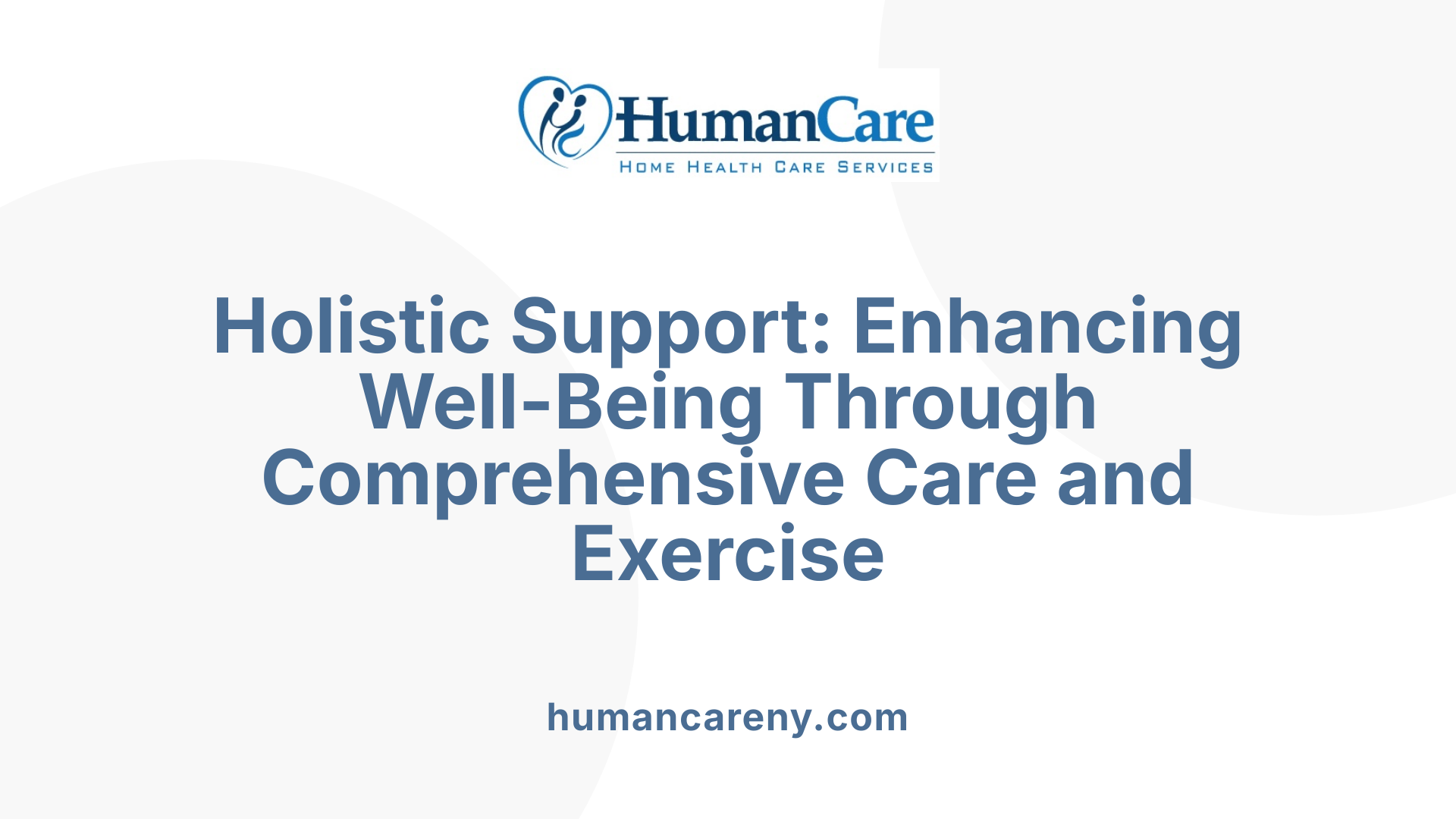Enhancing Quality of Life with Gentle Guidance
Companion caregivers play a vital role in promoting physical activity among seniors, fostering not only improved health but also emotional well-being. Through personalized support, encouragement, and safety monitoring, these dedicated individuals help older adults maintain mobility, strength, and social connections. This article explores how caregivers assist seniors with daily exercises, highlighting the types of activities involved, the benefits gained, and essential safety precautions, all aimed at fostering independence and joy in later years.
Personalized Exercise Planning and Motivation
 Creating individual exercise routines tailored to seniors’ preferences and abilities is essential for maintaining motivation and promoting consistency. Caregivers should start by discussing what physical activities the senior enjoys, such as dancing, gardening, or water aerobics, and incorporate these into daily or weekly routines. Recognizing each senior’s unique physical capacity helps in designing appropriate activities that are both safe and enjoyable.
Creating individual exercise routines tailored to seniors’ preferences and abilities is essential for maintaining motivation and promoting consistency. Caregivers should start by discussing what physical activities the senior enjoys, such as dancing, gardening, or water aerobics, and incorporate these into daily or weekly routines. Recognizing each senior’s unique physical capacity helps in designing appropriate activities that are both safe and enjoyable.
Beginning with gentle, manageable exercises helps build confidence and avoids overwhelming the senior. Setting achievable goals, like walking for 10 minutes a day or performing chair stretches, encourages a sense of accomplishment and gradual improvement. As confidence and endurance grow, routines can be progressively increased.
Activities that seniors find fun and engaging can include a mix of gentle aerobic exercises, balance training, and stretching. Examples include dancing to favorite music, tending to the garden, or participating in water-based exercises, which reduce joint strain. These enjoyable activities foster a positive exercise experience, encouraging consistent participation.
How does physical activity contribute to seniors’ mental and emotional health?
Regular exercise dramatically enhances mental and emotional well-being among seniors. It lifts mood through endorphin release, reduces anxiety and depression, and strengthens resilience against mental health challenges. Engaging in physical activity also boosts social interactions when performed with others, creating a sense of community and belonging. This social component is vital for seniors, as it reduces feelings of loneliness and isolation.
Exercise supports cognitive health by improving brain function, delaying cognitive decline, and decreasing the risk of dementia. It also helps in managing stress, improving sleep patterns, and increasing overall psychological resilience. In essence, staying active fosters a better quality of life by promoting emotional stability, independence, and social connectedness.
What are effective ways for caregivers to support seniors’ physical activity?
Caregivers play a crucial role in facilitating active lifestyles by creating supportive environments and encouraging regular movement. Practical strategies include setting up a comfortable, safe exercise space at home equipped with resources like chair routines, resistance bands, or access to online exercise classes tailored for seniors. Making activities a social affair—walking together, dancing, or participating in group classes—adds motivation and emotional benefits.
Encouraging short, manageable bouts of activity, sometimes called 'exercise snacks,' helps seniors accumulate necessary physical activity without feeling overwhelmed. For example, walking around the house or stepping in place can be easily integrated into daily routines.
Personalization is key; routines should consider health limitations and preferences. Caregivers need to emphasize safety by teaching warm-ups, encouraging proper hydration, and modifying exercises when needed. Collaborating with physical therapists or community programs can improve results and adherence.
Supporting social participation, such as joining senior exercise groups or community walk programs, enhances motivation and reduces isolation. Regular check-ins and positive reinforcement from caregivers reinforce consistency. Ultimately, fostering an environment of encouragement and tailored support helps seniors enjoy the benefits of physical activity, leading to improved health and well-being.
Support and Companionship in Daily Exercise R routines

How do caregiver support and companionship promote daily exercise among seniors?
Caregivers play an essential role in encouraging seniors to stay active by providing consistent support and companionship. Their presence helps motivate seniors to engage in regular physical activities, making exercise more enjoyable and less intimidating. Caregivers assist with safe execution of exercises like walking, stretching, balance training, chair squats, and light resistance exercises, ensuring seniors perform routines correctly and safely.
Moreover, social interaction during exercise, such as gardening together or participating in balloon volleyball, enhances engagement and makes physical activity something seniors look forward to. The companionship provided by caregivers reduces feelings of loneliness, fosters a positive attitude towards movement, and encourages adherence to exercise routines.
Caregivers also help in setting realistic, personalized goals based on each senior’s abilities and preferences, creating a supportive environment where seniors feel empowered. This tailored approach helps maintain motivation, boosts confidence, and cultivates a habit of daily activity, which ultimately promotes better health, independence, and overall quality of life for older adults.
What are the benefits of caregiver-assisted exercises for seniors' health and well-being?
The assistance of caregivers in exercises offers numerous health benefits for seniors. Engaging in supported physical activities can significantly improve mobility, strength, and flexibility, helping seniors perform daily tasks more easily and safely. These activities, whether walking, chair exercises, or gentle resistance training, help maintain or enhance cardiovascular health, reduce fall risk, and delay onset of mobility issues.
Beyond physical advantages, caregiver-participated exercise routines also foster emotional resilience. Regular social interactions during activities like indoor stretching, light dancing, or outdoor walks lift mood, decrease feelings of loneliness and depression, and promote mental clarity.
Furthermore, caregiver-assisted exercises contribute to reducing the risk of chronic diseases such as hypertension, diabetes, and heart disease. They reinforce a routine that offers a sense of purpose and achievement, boosting self-esteem and encouraging continued movement.
Caregivers not only help execute these exercises safely but also provide encouragement, making physical activity an enjoyable, integral part of seniors’ daily lives. This holistic approach supports overall well-being, helping older adults maintain independence and improve their quality of life.
Safety First: Ensuring Secure Exercise Routines

What safety precautions should caregivers observe during seniors’ exercise routines?
When helping seniors stay active at home, safety must always come first. Caregivers should ensure that any exercise program is tailored to the individual's health status and physical capabilities. Before starting, it is advisable for seniors to consult with healthcare professionals or physical therapists to develop a safe and effective routine.
Supervision during exercise sessions is essential to prevent falls, injuries, and overexertion. Caregivers need to pay close attention to the senior's form and endurance levels, adjusting activities as needed. For example, they should be ready to assist if balance becomes unstable or if fatigue sets in.
Promoting warm-up and cool-down activities is vital. Gentle stretching before and after exercises helps maintain joint flexibility, reduce muscle stiffness, and prevent strains. Hydration is equally important, so caregivers should remind seniors to drink water before, during, and after activity.
Choosing appropriate exercises based on individual health conditions is crucial. Low-impact options such as chair exercises, gentle walking indoors or outdoors, resistance band workouts, and stretching are generally safe for most seniors.
Environmental safety also plays a role. Exercises should be performed in a safe area free of tripping hazards, with proper lighting and footwear. In some cases, mobility aids or safety devices like grab bars may be necessary.
Incorporating balance, flexibility, and strength exercises suited for the senior's needs helps enhance safety. For instance, simple balance activities like standing on one foot or tandem walking can help reduce fall risk, while chair squats or arm raises improve strength without excessive strain.
Overall, caregivers should foster a supportive environment that emphasizes gradual progression, attentiveness, and adaptability to ensure each exercise session promotes health without compromising safety.
Safety Tips for Exercising Safely in Seniors
| Safety Measure | Description | Additional Details |
|---|---|---|
| Proper supervision | Always oversee exercises, especially for seniors with mobility issues or health concerns | Prevents falls and injury; assists with posture and stability |
| Tailored exercise plans | Customize routines to match individual health status and physical ability | Reduces overexertion and injury risk |
| Warm-up and cool-down | Incorporate light stretching before and after exercises | Maintains joint health and flexibility |
| Hydration | Encourage regular water intake during activity | Prevents dehydration and fatigue |
| Safe environment | Exercise in areas free of tripping hazards, with proper lighting | Minimizes fall risk |
| Appropriate footwear | Wear supportive shoes that prevent slipping | Ensures stability and balance |
| Gradual intensity increase | Start slow and small, then build up | Avoids strain and overfatigue |
| Regular assessment | Monitor progress and any discomfort | Adjust routines as needed |
Adopting these precautions helps seniors enjoy the benefits of regular activity while reducing potential risks. It also encourages confidence and independence during exercise routines, promoting overall well-being.
Holistic Care and Broader Benefits of Companion Support

How does holistic care address physical, emotional, social, and mental needs?
Holistic care for seniors involves creating personalized plans that target multiple aspects of well-being. Caregivers evaluate each senior's unique needs, preferences, and health status to develop activities that promote physical strength, emotional resilience, social connections, and mental sharpness. For example, a tailored exercise routine might combine gentle chair exercises with engaging conversations or hobbies like arts and crafts.
Such a comprehensive approach ensures that seniors maintain their independence, reduce risks of illness, or cognitive decline, and experience a greater quality of life. It moves beyond treating just physical symptoms to nurturing overall well-being.
How do caregivers monitor progress and modify routines?
Ongoing observation is vital to successful senior care. Caregivers regularly check how seniors respond to their routines, noting improvements or signs of strain. Using this information, they adapt activities to prevent fatigue or injury, making exercises easier or more challenging based on progress.
For instance, if a senior gains strength, the caregiver might introduce more vigorous activities like resistance band exercises or longer walks. Conversely, if fatigue or discomfort occurs, routines can be scaled back or modified with gentler stretches or shorter walks. This dynamic adjustment helps sustain motivation and ensures safety.
What role does emotional support play through interactions?
Companionship that includes meaningful conversations, shared activities, and attentive listening fosters emotional health. Seniors often experience feelings of loneliness or anxiety, especially if they live alone or face health challenges.
Engaging in regular chats, reminiscing over old photos, or discussing daily routines provides comfort and reassurance. These interactions enhance mood, reduce feelings of sadness, and build a trusting relationship with caregivers. Emotional support also helps seniors feel valued, which is crucial for mental resilience.
How does facilitating social and community engagement benefit seniors?
Encouraging participation in social activities like community events, hobbies, or outings helps seniors stay connected and involved. Caregivers assist with transportation, introduce new groups, or facilitate virtual socialization via technology.
Being part of a community offers mental stimulation, reduces loneliness, and fosters a sense of purpose. For example, arranging visits to local clubs or social gatherings helps seniors forge new friendships and stay engaged. This social connectivity is instrumental in maintaining both emotional and physical health.
| Aspect | Approach | Benefit | Example Activities |
|---|---|---|---|
| Physical | Personalized exercise plans | Improves mobility, strength, and balance | Walking, chair squats, water aerobics |
| Emotional | Regular conversations & shared activities | Boosts mood, reduces loneliness | Reading aloud, reminiscing, hobbies |
| Social | Community involvement & outings | Encourages social bonds & purpose | Attending clubs, volunteer work |
| Mental | Puzzles, games, cognitive exercises | Maintains cognitive sharpness | Crosswords, memory games, arts & crafts |
In summary, holistic senior care integrates physical activity, emotional support, and social engagement into tailored routines. Caregivers' monitoring and adaptive strategies ensure these activities are safe and effective, promoting a balanced sense of well-being for seniors.
For more detailed insights, exploring "Holistic senior care through companionship and exercise support" can provide additional strategies and success stories.
A Partnership for Better Aging
In conclusion, companion caregivers are vital in helping seniors lead active, healthy, and fulfilling lives. Their support in designing personalized exercise routines not only improves physical health—such as strength, balance, and mobility—but also enhances mental and emotional resilience. Through encouragement, companionship, and safety oversight, caregivers foster a positive environment where seniors can enjoy the benefits of regular physical activity. This holistic approach to care ensures that older adults remain independent, socially connected, and emotionally secure, ultimately enriching their quality of life and enabling a dignified retirement.
References
- Caring for Seniors at Home Through Exercise - AmeriCare Plus
- Best Exercises to Do with a Companion Caregiver - Ideal Home Care
- Companion Care Helps Seniors Stay Active At Home
- Encouragement & Monitoring of Exercises - Noble Companion
- Understanding Companion Care Services - Comfort Keepers
- How Companion Care Can Help Combat Senior Isolation and ...
- Companion Care for Older Adults: What to Consider?



